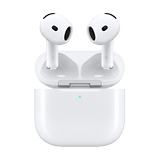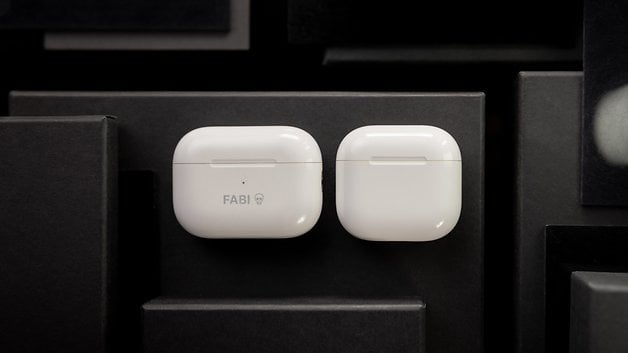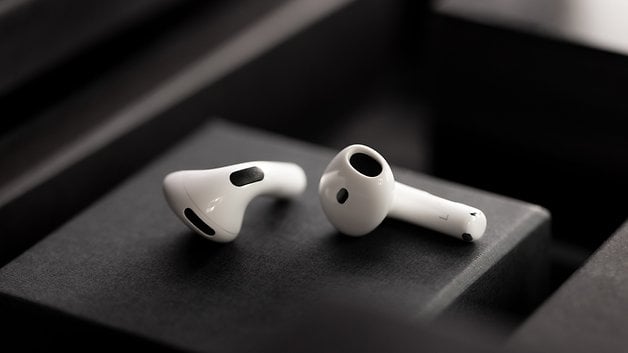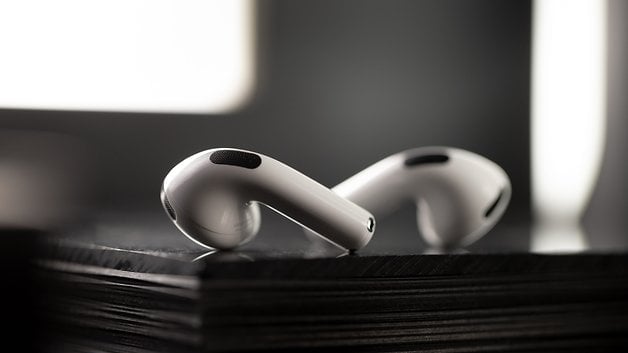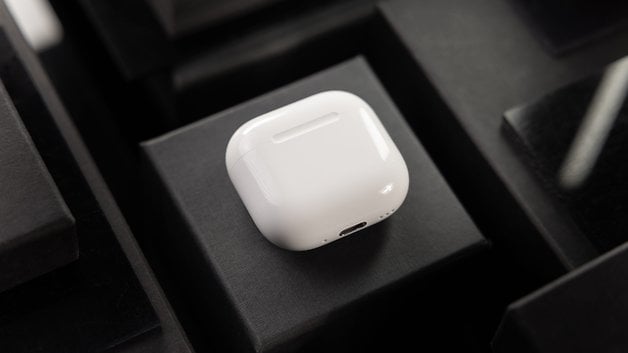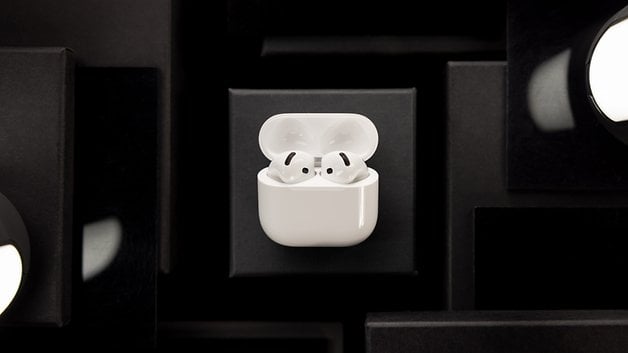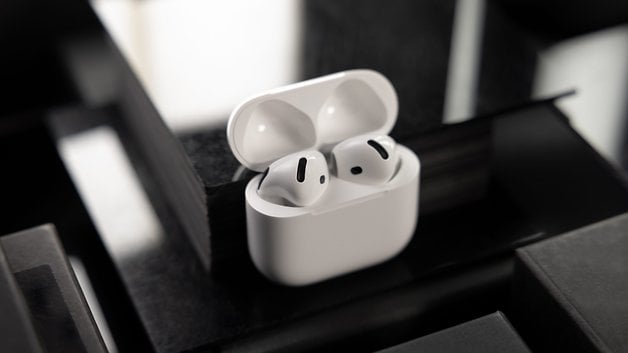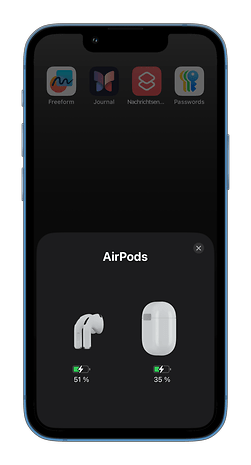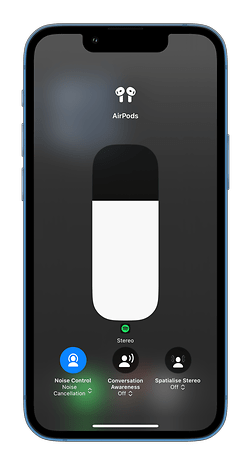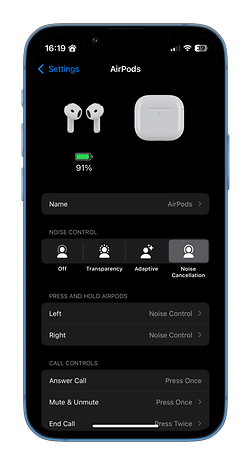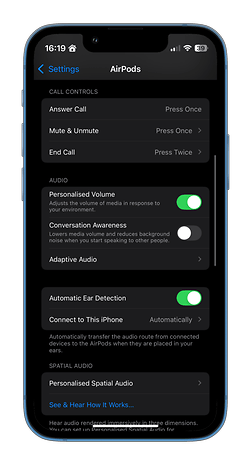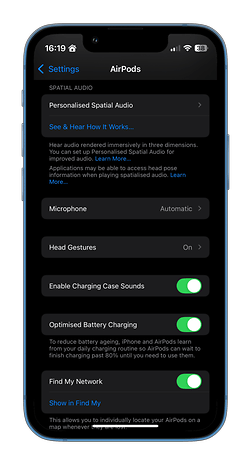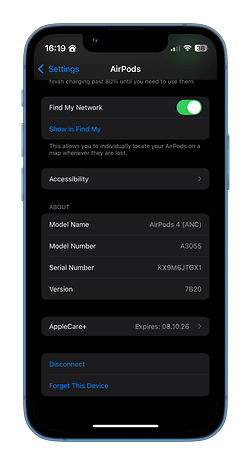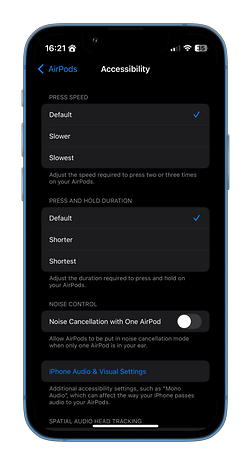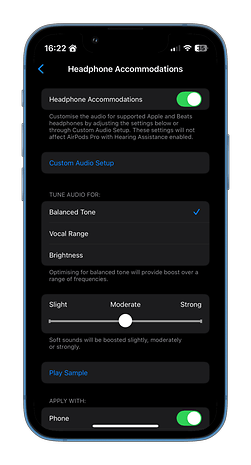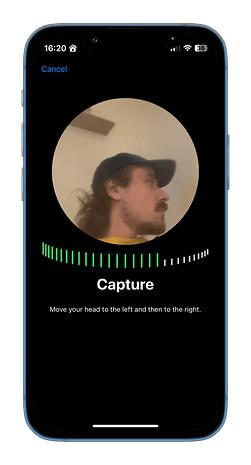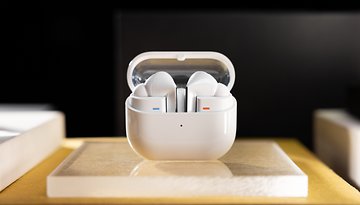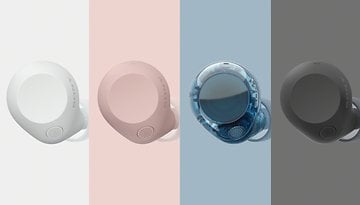AirPods 4 With ANC Review: Are These the Best AirPods?
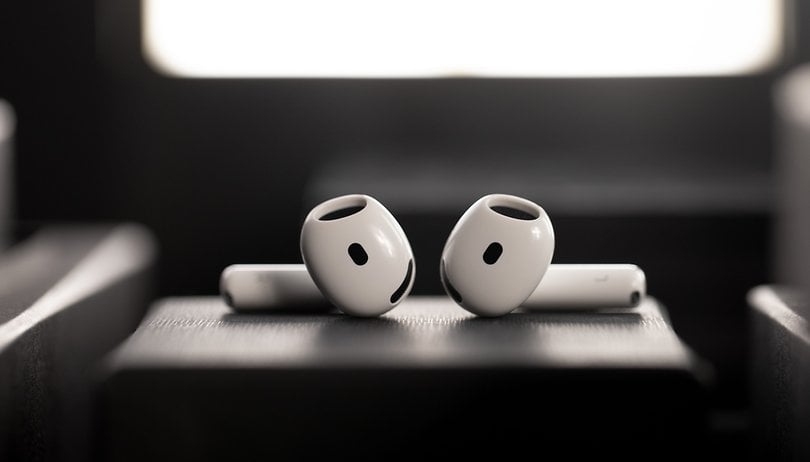

It "only" took four generations: Apple finally gave the AirPods ANC in 2024—and promptly charged an extra $50 for it. However, the AirPods 4 should also sound better thanks to the H2 chip, and can recognize gestures based on head movements. Will they leave the competition behind? And for whom are they better suited than the AirPods Pro? I found out for nextpit!
Good
- Wide range of functions
- Great user experience under iOS
- ANC convinces despite open design
- Good sound quality
Bad
- Battery life no longer quite competitive
- High surcharge for ANC function
- Severe limitations with non-Apple devices
- Cannot be used as hearing aids (like the Pro models)

Summary and purchase
Clever move: If you like the loose feel of the AirPods and don't want to do without active noise cancellation, the fourth generation may now be the perfect headphones for you. Both ANC and the sound are impressive in the test, but the range of functions of the Apple headphones is particularly impressive. The biggest point of criticism remains the short battery life: four hours of audio playback is no longer up to date.
The catch? The ANC model has an MSRP of $180, while the regular model costs $130.
Design & wearing comfort
| design |
|---|
|
Visually, little has changed in the fourth generation of AirPods—the wireless earbuds are still only available in a white color variant, the charging case is really tiny with dimensions of 50 x 21 x 46 mm, and without silicone tips, the wearing comfort is unfamiliar at first. However, Apple has evaluated a number of ears for greater wearing comfort and protects the earbuds with IP54 certification if they fall down.
Since Apple introduced the first AirPods in 2016, a lot has happened with the headphones, but little has changed. On the one hand, they still rely on the white headphone design without silicone tips or other mechanisms for a better grip. On the other hand, Apple has collected a data set of 50 million data points from ear shapes over the years. The company collected this data using laser topography and 3D photogrammetry and then added it together to create the absolute best earbud shape for the average ear.
In the fourth generation, the AirPods is particularly comfortable and secure in the ear. The company is taking a bold approach and not allowing customers to make any adjustments via silicone tips or attachments. Anyone who regularly wears other earbuds will find the wearing experience very unfamiliar at first. At first, I hardly had the confidence to wear the AirPods over the sink or while jogging.
A few hours and a few head-shaking tests later, however, it turns out that Apple's approach really works. Despite the open design—not quite as open as "real open" headphones—the AirPods sit securely in the ear and did not fall out of them during the test period. Nevertheless, there is always a feeling of "Do they really hold firmly in the ear?" when inserting them, which does not go away even after several days. In addition, the earbuds do slip in the ear. This is noticeable in slight changes to the sound and ANC.
The familiar stem, to which Apple attaches the controls, headphones, and charging contacts, has become a little shorter. This makes the earbuds a little less noticeable in the ear. The charging case was also impressive during the test period. Not only does it have a particularly high-quality finish, Apple has also managed to shrink its volume by a further 30 percent. This makes it one of the smallest charging cases I know of for true wireless headphones. Apple has also replaced the button on the back with a knock sensor. This means you tap the front of the case twice to pair them manually.
Apple has also placed a speaker on the underside, which has two main functions: On the one hand, it can play a sound if you have misplaced the AirPods. Even more practical, however, is that it indicates the charging status via acoustic signals. This means you are less likely to forget to charge the headphones.
Finally, on a positive note, Apple sources the rare earth metals for the magnets, the gold and tin as well as the aluminum for the hinge of the charging case entirely from recycled sources.
Operation and comfort functions
Apple is adding a new control option to the AirPods: if you shake your head or nod your head, your iPhone understands whether you are answering or denying questions. This allows you to answer calls or have long WhatsApp messages read out to you. Apart from that, there is still the familiar "squeeze control", which still lacks volume control.
We like it:
- Head gestures are amazingly practical
- Squeeze gestures are the best earbud control for me
Don't like:
- No volume control on the earbuds
- Very limited equalizer
Since the launch of Vision Pro, Apple has recognized that control doesn't always have to be done with your hands. The exciting thing about the fourth-generation AirPods is that they can recognize head nods and head shakes. The system allows you to answer calls or interrupt notifications read aloud by Siri. You can tell that the earbuds recognize your input by a gentle tapping in your ear. In typical Apple fashion, gesture control becomes second nature within a few attempts.
Hands-free control is particularly practical for calls. You can accept or reject calls very easily. However, this can look quite strange to the outside world. In the test, for example, someone sent me several WhatsApp messages in a row and I had to shake my head every 30 seconds while I was on the move. Of course, gesture control can also be completely deactivated.
The same applies to Siri's read-aloud notifications, which I found rather practical during the test period. The voice assistant decides when, for example, a WhatsApp message is too long and asks you whether it should read it all out. It would be even more practical if it could recognize that several messages have arrived and then read them out aloud in a bundle.
The way Apple handles the AirPods' equalizer is also very annoying. As with wearing comfort, the company is very convinced that it knows the best sound profile for all customers. That's why three adjustments are packed deep into the accessibility settings. The three settings "Balanced tone", "Tuning start" and "Treble" change the sound noticeably, but are too inflexible overall. Alternatively, there is a workaround that allows you to set up frequency bands and change their intensity using the "Audiogram" function. However, this is so cumbersome that very few users will set it up.
Compared to the second-generation AirPods Pro we tested a while back, the basic models also lack a relevant function: the cheaper models cannot be used as hearing aids. A function that would certainly be technically feasible—alternatively, there is only the "live listening" function, which plays back the audio input from the iPhone microphone via the headphones.
If we look again at the more expensive Pro models, the hearing protection function is also missing. Similar to the Google Pixel Buds Pro 2, the Pro AirPods monitor how long you expose your ears to a high or excessive noise level. Here again, we see an artificial restriction to encourage the purchase of the more expensive headphones.
To end on a positive note: Apple's Spatial Audio also works great with the AirPods 4. The AirPods simulate the impression that the sound is coming spatially from the cell phone speaker. This function can be adapted to your own ear shape. You can see the instructions in the next chapter!
By the way, the AirPods can also be used with Android devices. Unfortunately, most of the comfort functions are missing here—and it is precisely these that give Apple an advantage over the competition. If you're looking for in-ear headphones for Android, I recommend the linked nextpit buying guide!
Sound and ANC
| Audio quality |
|---|
|
| Active noise cancellation |
|
Apple is using new drivers in the fourth-generation AirPods and equipping them with ANC on request. Active noise cancellation, which works by generating anti-noise, is available for an additional $50. The earbuds can adaptively adjust both the ANC and the volume to the ambient noise.
Apple is once again keeping quiet about how exactly the AirPods' drivers have been improved. You won't find any official information on the frequency response from Apple either, so we have to rely on subjective sound quality. And after unpacking them for the first time, I found it extremely disappointing.
The AirPods sound extremely flat and tend to muddy up the treble. I repeatedly checked whether this might be due to incorrect insertion into the ear, but was unable to achieve any improvement. It was only when I activated the equalizer via the user-friendliness settings that I liked the sound of the earbuds.
I mainly listened to more complex to chaotic music on the AirPods, such as the experimental rock songs on "The New Sound" by Geordie Greep or some albums by Frank Zappa. After adjusting the sound with the EQ, I was surprised at how high-resolution the AirPods 4 were despite the lack of HD codecs. As with the Pro models, Apple relies on AAC and SBC and manages to take full advantage of its own codec in its own ecosystem. If you want to find out more about Apple's own codec, I recommend my guide to Bluetooth codecs.
While the AirPods 4 offer a high level of clarity with the right settings, the earbuds lack the necessary punch with bass-heavy music in every setting. "9K" by OG Keemo and Tom Hengst becomes muddy when the bassline kicks in and is much more fun on other earbuds. If you don't go for Apple, you can now find extremely flexible and good-sounding in-ear headphones—such as the fantastic AirPro 4 from EarFun (to test), which are available for less than $90.
As a major innovation, Apple now also offers the standard AirPods with ANC. The model we tested is therefore $50 more expensive than the basic version. This is quite a considerable surcharge for a function that many earbuds in the price range below $100 already do really well. Thanks to the H2 chips, Apple's ANC is very powerful despite the open design.
In a busy café, the earbuds manage to almost completely block out the humming of a running parking heater. Background conversations are reduced by around 50 percent and can be conveniently faded out via music or Apple's native noise generation. Only sudden noises such as clattering cutlery or coughing reach the ear almost unfiltered. This is where you notice the lack of passive noise suppression due to the open design.
Both the ANC and the volume of the AirPods are adaptive. This means that the earbuds react to sounds from the environment and adjust characteristics accordingly. While this is less noticeable with ANC, you can really tell when the AirPods are reacting with the adaptive volume. I was initially confused as to why the volume was constantly changing—but the function can of course be deactivated.
Finally, I have to praise Apple's transparency mode, which sounds wonderfully natural. The headphones also cope well with wind noise. Even many more expensive ANC earbuds have problems with this!
Battery and charging
| Battery and charging |
|---|
|
The AirPods 4 with ANC are well behind the competition in terms of battery life. While the standard earbuds already have a comparatively short battery life of five hours, the ANC version has an even shorter battery life of four hours. The case can be charged either wired via USB-C or wirelessly via the Qi standard.
The year 2024 was quite interesting when it came to the battery life of in-ear headphones. Models such as the Google Pixel Buds Pro 2 break the eight-hour mark even with ANC and can stay in your ear for an entire working day. The Sony WF C510, on the other hand, last for over eleven hours without ANC and cost just $60.
Compared to the competition, the battery life of the AirPods 4 is therefore inadequate with five hours without ANC and four hours with ANC. And even when looking at the previous model, it is noticeable that the latest AirPods last shorter. I mention this so clearly because many Apple fans mainly operate within their own ecosystem. And when it comes to battery life in particular, it's worth taking a look at other manufacturers.
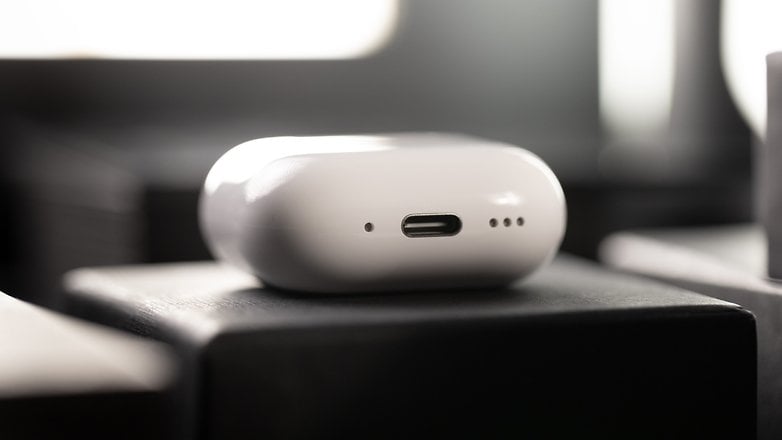
What Apple had to adapt to this year, however, is the EU directive on USB-C ports. To ensure that the 4th generation AirPods can still be sold in Europe in 2025, they must use USB-C. Alternatively, there is wireless charging in the model with ANC, which works either via the charging puck of the Apple Watch or via a Qi Charger.
Quick charging is also available, with the AirPods achieving one hour of playback time after five minutes of charging in the case. The case extends the total runtime to 30 hours. Charging almost eight times (with ANC) is quite impressive considering the tiny charging case.
Final conclusion
You have to use the first fourth-generation ANC AirPods for a while to get used to them. The feel is different to most competing products, the sound is only competitive thanks to Apple's rudimentary equalizer, and the many functions are confusing at first, even for in-ear professionals. However, after some familiarization, the AirPods become great everyday companions.
The charging case fits even better in your pocket, you can finally reduce annoying noises on public transport and the AirPods allow a hands-free connection to the iPhone. The fact that you can reject notifications by shaking your head is incredibly practical. And so there are really only two points of criticism left:
The first is the rather ambitious price. You pay $50 more for the ANC version, i.e. just under $180. The gap to the Pro models for $250 is not too big—and they offer even better ANC, a better sound and can even be used as hearing aids.
The Pro models also improve on the second point of criticism, albeit only slightly. Offering in-ear headphones in 2024 that only last four hours with active noise cancellation is almost ridiculous when you look at the competition. Even smaller earbuds now last a whole working day. If you can live with that, the 4th generation AirPods are certainly impressive!
